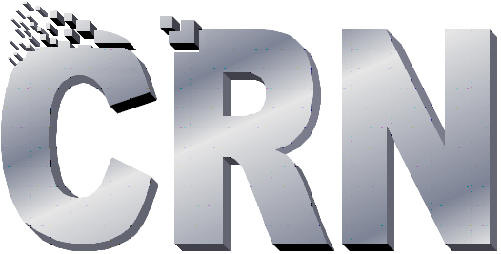Prepared by
Chris Phoenix
This page provides supplemental information to the presentation made by
CRN before the U.S.
Environmental Protection Agency Science Advisory Board
on December 11, 2003.
The Problem
Nanotechnology may lead to a breakthrough manufacturing technology. Some
projected implications have been extreme enough to inspire disbelief and fear.
The resulting lack of attention and active opposition are unfortunate, because
limited versions may be developed in the next decade, and may require proactive
environmental policy attention.
The Technology
Fact: Mechanical systems can do precisely positioned, covalent
chemistry in vacuum. (MORE)
Theory: Nanoscale mechanical systems can do the same.
(MORE)
Theory: A small set of reactions can construct 3D
covalent solids, a few atoms at a time, from simple feedstock of small
molecules. (MORE)
Theory: Such 3D covalent solids can implement
nanoscale mechanical systems. (MORE)
Fact: Ordinary covalent chemistry is digital: the bond is either there,
or not. (MORE)
Theory: Mechanical chemistry can be extremely
reliable, with extremely high yields. (MORE)
Theory: An extremely reliable and repeatable
manufacturing system can be based on positional mechanical chemistry. (MORE)
Theory: Such a manufacturing system could be
completely automated. (MORE)
Theory: With good engineering, the advantages of
molecular manufacturing can outweigh its limitations. (MORE)
Fact: Incredibly complex software has been built using reliable flexible
digital operations. (MORE)
Theory: We could build incredibly complex hardware
with reliable programmable chemical operations. (MORE)
Theory: The range of hardware could include a system
capable of copying its structure. (MORE)
Fact: Rapid prototyping and automated assembly are already valuable
technologies. (MORE)
Theory: Automated production of molecular machine
parts from straightforward design appears possible. (MORE)
Theory: Systems and products, including macroscopic
products, can be produced from arrays of nanoscale chemical fabricators and
larger assembly robotics. (MORE)
If the stated theory is correct, mechanical chemistry can form the basis
of a general-purpose fully automated manufacturing system capable of directly
fabricating additional manufacturing systems, and also capable of manufacturing
large products with nanoscale features and atomic precision. Such a system would
be cheap to operate, and manufacturing capability could be increased
exponentially at low cost.
Incentives and Timeline for Development
The difficulty of developing a molecular manufacturing system depends on how
much chemistry will be required for general-purpose (not “universal”)
manufacturing. It appears that a useful manufacturing system could be made with
just carbon-lattice chemistry, requiring a small number of reactions on stiff
(predictable) substrates. We estimate that with sufficient effort, such a system
might be developed as early as 2010. (MORE)
Rapid-prototyping systems such as plastic-jet “printing” are developing
toward general-purpose manufacturing. Lithography and biomimetic engineering are
also potential competitors. But diamondoid molecular manufacturing is expected
to be orders of magnitude better in several ways: stronger and more diverse
materials, smaller feature sizes, more compact functionality, and more efficient
manufacturing. (MORE)
A general-purpose diamondoid molecular manufacturing system could build advanced
products including computers and medical devices that most technology road maps
place around 2030-2050. High production capacity would follow rapidly, and the
value created by such a system would be enormous. Portable high-performance
exponential manufacturing would enable rapid modernization, making it especially
attractive to large nations lacking infrastructure. (MORE)
Ecological Impacts of General-purpose Molecular Manufacturing
Small products: The ability to build small-format products intended
for use in unconfined environments, including medical and surveillance devices,
implies the accumulation of nano-litter. The smallest devices could be
considered nanoparticles. (MORE)
Increased consumption: If manufacturing gets very cheap, people will
use more products. High-tech products tend to use a lot of power. (MORE)
Weapons: Compact powerful products invite use as weapons. Cleanup after a
military or terrorist strike could require new techniques. (MORE)
Environmental remediation: More advanced technology is usually cleaner.
Technologically-intensive cleanup could become a lot cheaper. (MORE)
(“Grey goo”: A free-range self-replicating robot will be harder to design than a
general-purpose manufacturing system. It is probably feasible with sufficient
effort, but not an initial concern.) (MORE)
Broader Policy Issues
How could portable general-purpose manufacturing be regulated? (MORE)
The Nanotechnology Act of 2003 does not study molecular manufacturing
technology, only molecular self-assembly (compare with the House version). Can
the EPA fill the gap? (MORE)
How can public (and scientific) opposition to this field based on “exponential
manufacturing equals self-replication equals grey goo” be mitigated? (MORE)
Will successful regulatory policy require international cooperation? (MORE)
